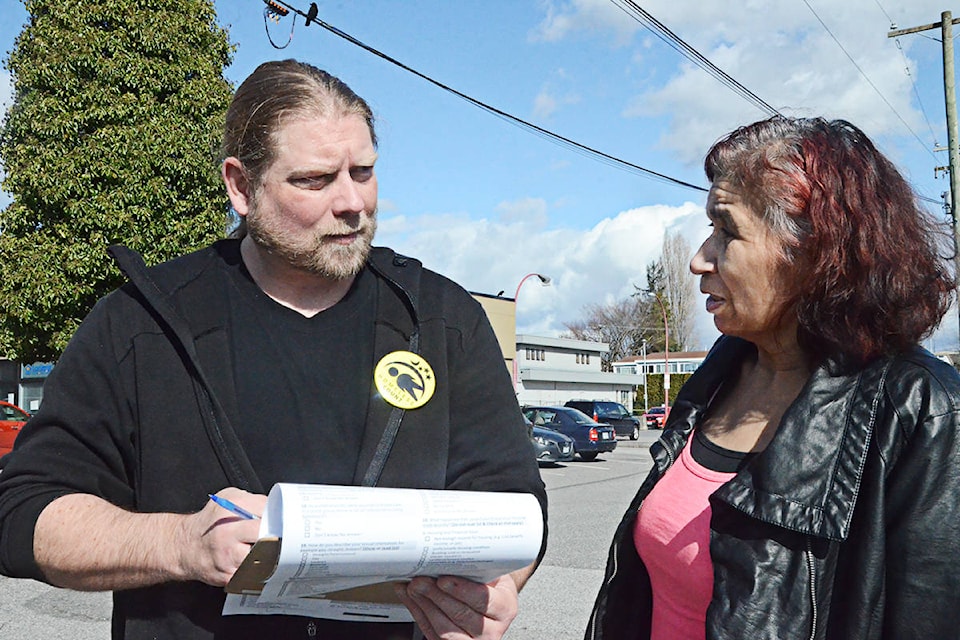Langley made no headway in reducing total homelessness over the last three years, despite a supportive housing project that opened last year.
The new Metro Vancouver Homeless Count was undertaken by a small army of volunteers on March 3 and 4 this year.
In Langley, they found 209 homeless people, whether on the street, camping in the bush, or in homeless shelters like the Salvation Army Gateway of Hope.
That’s only a slight increase from the 206 who were counted in 2017, the last year the survey was conducted.
Despite the fact that numbers aren’t going down, homelessness outreach worker Fraser Holland said the numbers give him hope.
“I’m encouraged that the numbers are at least stabilizing,” he said.
A one per cent increase over three years is a lot better than the 124 per cent increase Langley saw between 2014 and 2017, he noted.
READ MORE: Homeless count aims to discover if numbers on Langley streets rising
PREVIOUSLY: Langley third highest for growth in homeless population
One of the big changes was the opening last fall of Creek Stone Place, a supportive housing project funded by BC Housing and run locally by Stepping Stone Community Services Society.
The original intake of Creek Stone was local homeless people. Without Creek Stone taking 49 people off the street, the numbers of homeless could have been more than 250 in Langley.
In addition to Creek Stone, since the last count in 2017, Langley has gained an Intensive Case Management Team, and a number of locally-based agencies including Starting Point, the Lookout Society, Encompass’s Youth Hub, and the Lower Fraser Valley Aboriginal Society have all expanded or begun programs aimed at aiding the homeless, Holland said. He believes it’s having an impact.
Holland noted that region-wide, numbers were only up by 29 people compared to three years ago.
With the situation stabilized, he said there needs to be more of a “housing continuum” for people, one that catches them on the way down rather than just trying to help once they’ve fallen all the way to the street.
Langley City Mayor Val van den Broek is worried that the homelessness situation might get worse due to the COVID-19 pandemic, which struck Canada just after the count was done.
“COVID has changed everything, and not for the better,” van den Broek said.
The economic downtown, along with a sharp increase in anxiety and mental health issues, could put more people in danger of homelessness, she said.
In addition, there’s still a need for more affordable housing in the community, she said.
The provincial and federal governments are going to have to work with municipal governments and Metro Vancouver to start bringing the number of homeless down, said the mayor.
“There’s no one quick fix.”
Even without a major increase, Langley still has the third-highest number of homeless people in Metro Vancouver, after Vancouver (2,095 people) and Surrey (644).
Langley, Surrey, Burnaby, the North Shore, and Richmond all saw an increase since the 2017 count, while Vancouver, the Tri-Cities, White Rock, Ridge Meadows, New Westminster, and Delta saw small decreases.
There was also some good news for youth homelessness, which decreased, but the percentage of people over 55 living on the streets or in shelters increased since 2017.
Indigenous people made up 33 per cent of those counted. Indigenous Canadians are 2.5 per cent of the overall population of Canada.
